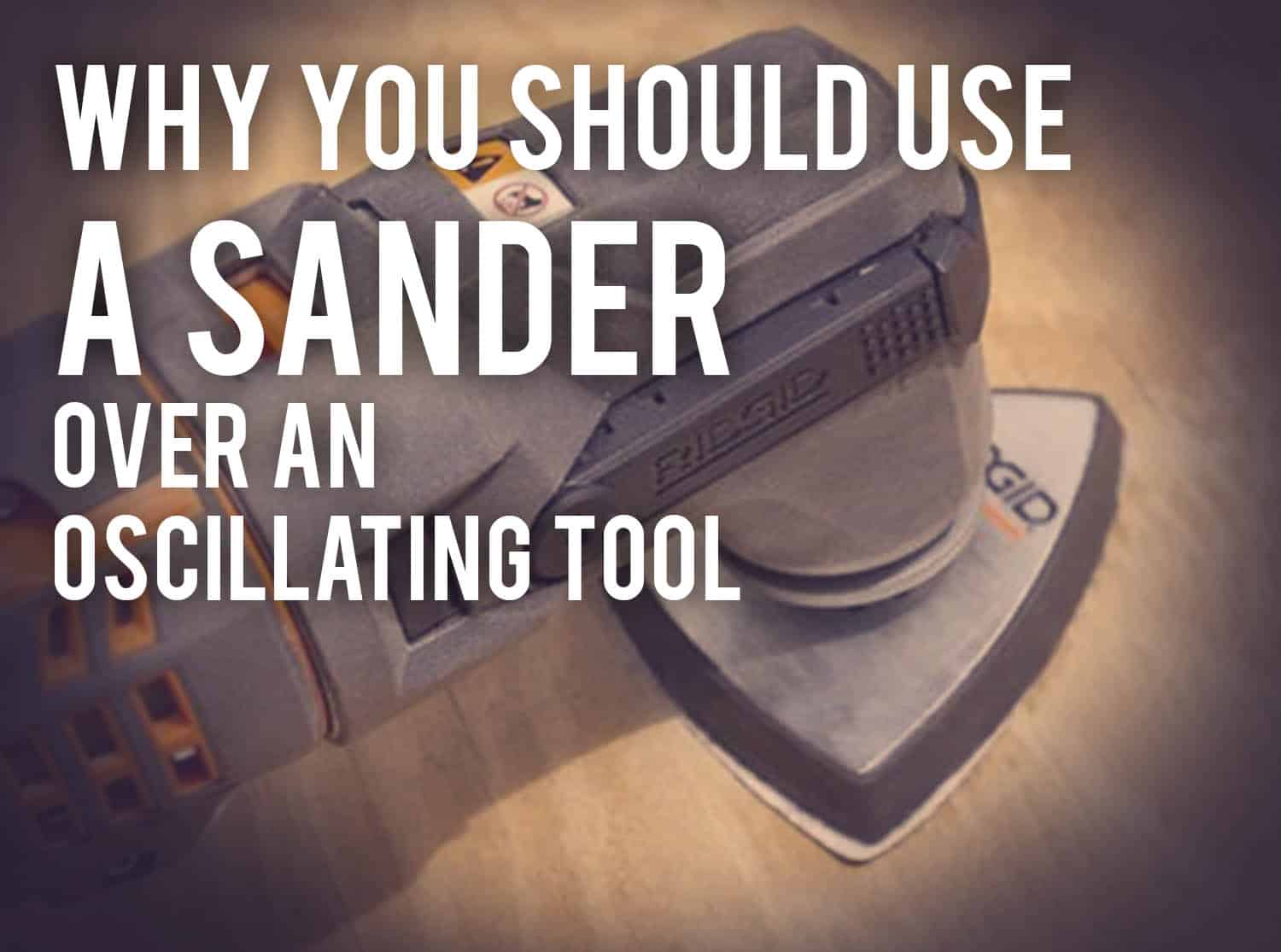As an Amazon Associate I earn from qualifying purchases. All claims are strictly my personal opinion.

Although fine woodworking details can be accomplished with an oscillating tool as well, a dedicated sander is much more efficient and capable of much better results. Without sanding, the finish is rough and can produce splinters or burrs. For anything that humans come into contact with, the finish needs to be smooth. Cabinets, chairs, and especially toys for children need a soft feel.
Why Oscillating Tools Are Not Recommended for Sanding
Oscillating tools are a nice addition to the workbench, there are many attachments available that can do a wide range of jobs. Sanding heads are available for these tools, and sanding can be accomplished on smaller scales with an oscillating tool.
The down side to the oscillating multi-tool is the durability of the sanding attachment. You will find yourself replacing the heads frequently, and often gouging the surface of the wood if you don’t have a firm grip on the tool or make a slight mistake.
Gouging the wood means more sanding and more sand paper, or a blemished finish. Putting a lot of work and time into a project that ends up with scars is a disappointing feeling, and can be avoided by using the proper tools and accessories.
When you can get away with an oscillating tool instead of a sander
The oscillating tool can be a great option if you are creating small objects from wood, they can get in to the nooks and crannies and provide a more detailed approach. With this tool, fine scroll saw work can be sanded in the spaces that a traditional sander cannot reach.
Additionally, an oscillating tool offers many attachments for a range of applications including cutting and scraping. This tool is a great option for many home improvement enthusiasts, and DIY tasks. The versatility makes gives the benefit of many tools in one, without needing to purchase each separately.
When you can’t get away with an oscillating tool and need a sander
Consequently, working a job such as the sanding of a large piece of wood would take you an incredibly long time to complete, if you are only using an oscillating tool. Even the larger types of these tools require attachments for each and every job.
With the multi-purpose tool the sanding attachments are not as effective as a tool that was created with the specific purpose of only sanding, therefore it was designed with the intention of creating an effective sander.
Multi-tool oscillators are designed to function with different purposes, on a most basic level. Additionally, with attachments that can be changed the heads could possibly vibrate loose, or get sloppy over time.
Why You Should Use a Sander
Sanders come in many different styles and types, each one with its own strengths. Let’s take a look at some of the more popular ones:
Belt Disc Sander
The belt/disc sander provides a large sanding area to tackle bigger jobs. With a coarse grit paper you could rip through a 2″ x 4″ in no time. This is the preferred sander among many woodworking enthusiasts, the ability to cover a large surface area cuts time and sandpaper replacements significantly. However, this is best suited for heavy sanding jobs, as opposed to fine details. Using this sander properly is crucial in achieving the right result.
Applying too much pressure or leaving it in one position without moving the wood around a bit can eat away too much of the surface and create ‘steps’ and gouges, or even a divot where the rolling bar is located.
Orbital Sander
The orbital sander also comes in many forms, this can provide a more detailed sanding, and the replacement sandpapers are easily changed. These can be powered by a standard power cord or lithium battery.
The orbital sander is a favorite among professionals and woodworking enthusiasts, it is possibly the most versatile of all types. The ability to effectively sand in tighter places, and cover larger areas of the same job without changing tools is one of the most beneficial qualities of the orbital sander.
Palm Sander
Palm sanders are an effective tool for most hobbyists, it is most effective at the fine grain sanding for the final surface and finishing touches.
The sandpaper can be tricky to attach, often needs the sandpaper cut to size, and tends to tear quite a bit easier than with other models. On the other hand it is a very popular tool due to the smooth finish it produces.
Corner Sander
Fine detail corner sanders are a good option for those who often need to get between areas in tight spaces and need a corner edge of sand grit to manage the nooks of cabinet doors, drawers, and in-between spots.
The shape of the sanding head is that of a triangle, providing a top corner for such jobs. The surface area is also sufficient for everyday jobs, medium-sized hobby applications, and home improvements.
Conclusion
Oscillating tools are no match for a dedicated sander when it comes to large jobs or large volume turn around. The fact is, it’s just not practical for most applications. It offers some key benefits that a sander cannot produce, cutting and carving for example.
If a DIY’er has small projects or occasional minimal sanding, an oscillating tool can probably accommodate and provide a quality finish for the job. For the hobbyist or professional that will be frequently sanding and using various types of wood, and has a specific need for varying grains of sandpaper, a dedicated sander is one of the must-haves for the wood shop.
Keep in mind it is an additional purchase, so budgeting for investments, however small, is an important consideration to make.



